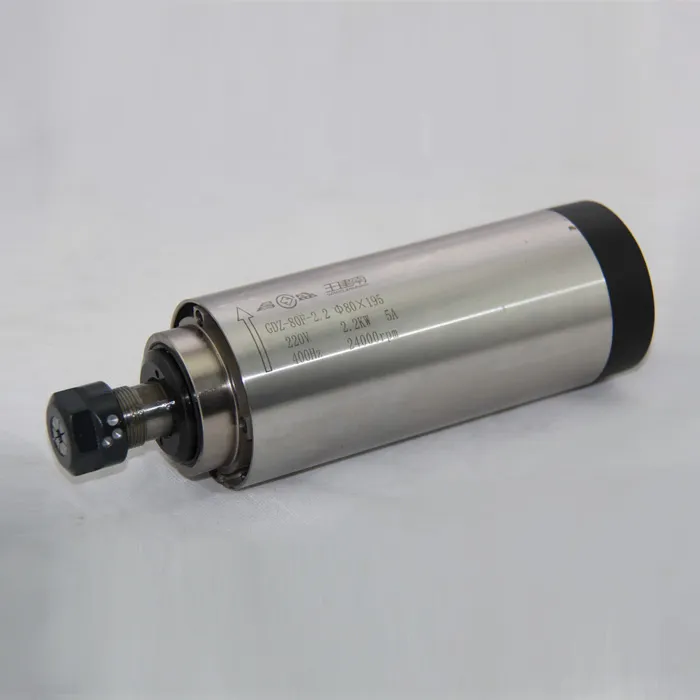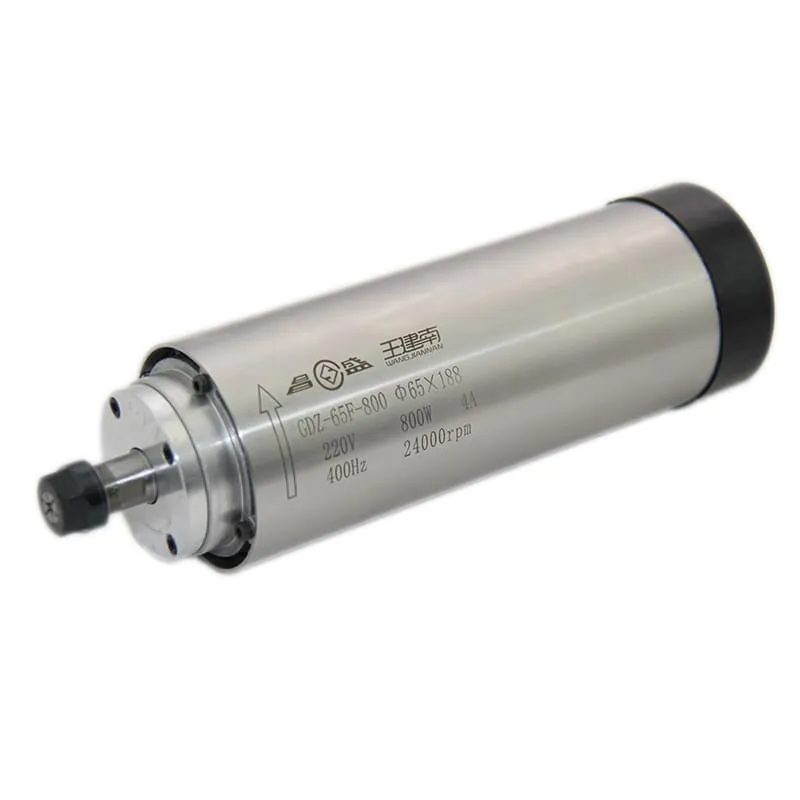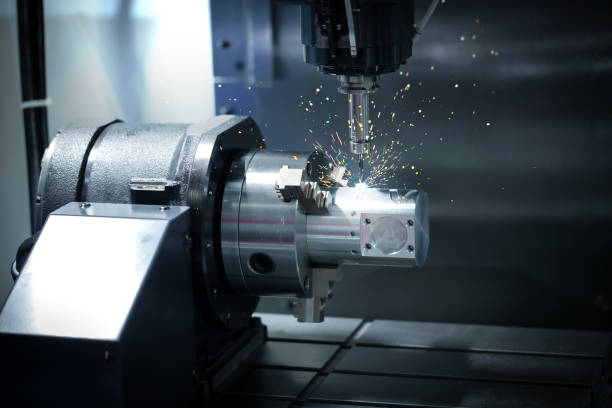Can CAM CNC: Unlocking Precision and Efficiency in Manufacturing
In the ever-evolving world of manufacturing, the fusion of Computer-Aided Manufacturing (CAM) and Computer Numerical Control (CNC) has revolutionized the way we create complex parts and products. This powerful combination, known as CAM CNC, has become an indispensable tool for industries ranging from aerospace to consumer goods. But what exactly is CAM CNC, and how can it benefit your manufacturing process? Let’s dive into the world of CAM CNC and explore its capabilities, advantages, and applications.
Understanding CAM CNC: The Perfect Marriage of Software and Hardware
CAM CNC represents the seamless integration of Computer-Aided Manufacturing (CAM) software with Computer Numerical Control (CNC) machines. This synergy allows for the creation of highly precise and complex parts with unprecedented efficiency. CAM software translates 3D models or 2D drawings into a set of instructions that CNC machines can understand and execute. These instructions, known as G-code, guide the CNC machine’s movements, controlling factors such as cutting speed, depth, and tool changes.
The beauty of CAM CNC lies in its ability to bridge the gap between design and production. It eliminates many of the manual steps traditionally required in manufacturing, reducing the potential for human error and significantly speeding up the production process. Whether you’re working with a desktop CNC router or a large industrial machine, CAM CNC can streamline your workflow and enhance your manufacturing capabilities.
The Evolution of CAM CNC: From Humble Beginnings to Industry Standard
The journey of CAM CNC began in the mid-20th century with the development of the first numerically controlled machines. These early systems relied on punched tape to provide instructions to the machine. As computer technology advanced, so did the capabilities of CAM and CNC systems.
Today, CAM CNC has become the industry standard for precision manufacturing. Modern CAM software offers a wide range of features, including:
- Simulation tools to visualize and optimize toolpaths
- Automatic feature recognition for faster programming
- Multi-axis machining capabilities for complex geometries
- Integration with CAD software for seamless design-to-manufacturing workflow
These advancements have made CAM CNC accessible to a broader range of users, from hobbyists with desktop CNC routers to large-scale industrial operations.
The Core Components of a CAM CNC System
A typical CAM CNC system consists of several key components:
- CAM Software: This is the brain of the operation, translating design files into machine instructions.
- CNC Machine: The hardware that executes the instructions, such as mills, lathes, or routers.
- Cutting Tools: Various end mills, drill bits, and other tools used for material removal.
- Workholding Devices: Clamps, vises, and fixtures that secure the workpiece during machining.
- Control System: The interface between the CAM software and the CNC machine.
One crucial component of many CNC machines is the spindle. For example, the 2.2KW ER20 Air-Cooled Spindle is an excellent choice for various CNC applications, offering a good balance of power and precision.

The CAM CNC Workflow: From Design to Finished Part
Understanding the CAM CNC workflow is crucial for maximizing the benefits of this technology. Here’s a step-by-step breakdown of the typical process:
- Design: Create a 3D model or 2D drawing using CAD software.
- Import: Bring the design into CAM software.
- Setup: Define the workpiece, machine parameters, and tooling.
- Toolpath Generation: Create and optimize cutting paths for each operation.
- Simulation: Visualize the machining process to check for errors or collisions.
- Post-Processing: Convert the toolpaths into G-code specific to your CNC machine.
- Setup: Prepare the CNC machine, load tools, and secure the workpiece.
- Machining: Run the G-code on the CNC machine to create the part.
- Inspection: Verify the finished part meets specifications.
This workflow demonstrates how CAM CNC streamlines the manufacturing process, reducing the time from concept to finished product.
Advantages of CAM CNC in Modern Manufacturing
The adoption of CAM CNC offers numerous benefits for manufacturers:
- Increased Precision: CAM CNC systems can achieve tolerances that are difficult or impossible to achieve manually.
- Improved Efficiency: Automated toolpath generation and optimization reduce programming time.
- Enhanced Consistency: CNC machines can produce identical parts repeatedly with high accuracy.
- Complex Geometries: CAM software enables the creation of intricate designs that would be challenging to produce manually.
- Reduced Waste: Simulation tools help identify and correct errors before cutting begins, minimizing material waste.
- Flexibility: CAM CNC systems can quickly adapt to new designs or product variations.
These advantages make CAM CNC an invaluable tool for businesses looking to stay competitive in today’s fast-paced manufacturing environment.
Applications of CAM CNC Across Industries
The versatility of CAM CNC has led to its adoption across a wide range of industries:
- Aerospace: Production of complex, lightweight components with tight tolerances.
- Automotive: Manufacturing of engine parts, molds for body panels, and prototypes.
- Medical: Creation of customized implants, surgical instruments, and dental prosthetics.
- Consumer Goods: Rapid prototyping and production of electronics enclosures, toys, and household items.
- Woodworking: Crafting intricate furniture designs and architectural elements.
- Mold Making: Producing highly detailed molds for injection molding and casting.
The ability of CAM CNC to handle diverse materials and complex geometries makes it a valuable asset in these and many other industries.
Choosing the Right CAM Software for Your CNC Machine
Selecting the appropriate CAM software is crucial for maximizing the potential of your CNC machine. Consider the following factors when making your choice:
- Compatibility: Ensure the software supports your specific CNC machine and control system.
- Features: Look for tools that match your manufacturing needs, such as multi-axis support or specialized toolpath strategies.
- Ease of Use: A user-friendly interface can significantly reduce the learning curve for new operators.
- Support and Training: Consider the availability of tutorials, documentation, and customer support.
- Cost: Evaluate the software’s price against its features and your budget.
Popular CAM software options include Fusion 360, Mastercam, and SolidCAM, each offering different features and price points to suit various needs.
Optimizing CNC Machine Performance with Advanced CAM Strategies
To get the most out of your CAM CNC system, consider implementing these advanced strategies:
- High-Speed Machining (HSM): Utilize specialized toolpaths that maintain consistent tool engagement to increase cutting speeds and improve surface finish.
- Adaptive Clearing: Employ toolpaths that adjust to the changing geometry of the workpiece, reducing cycle times and tool wear.
- Rest Machining: Automatically identify and machine areas left by larger tools, improving efficiency in roughing operations.
- Feature-Based Machining: Use automatic feature recognition to streamline programming for common part features.
- Simulation and Verification: Thoroughly simulate toolpaths to prevent collisions and optimize machining strategies.
Implementing these strategies can significantly improve your CNC machine’s efficiency and output quality.
The Role of CAM CNC in Industry 4.0 and Smart Manufacturing
CAM CNC is playing a crucial role in the transition to Industry 4.0 and smart manufacturing. Here’s how:
- Data Integration: CAM CNC systems can integrate with MES (Manufacturing Execution Systems) and ERP (Enterprise Resource Planning) software for improved production planning and tracking.
- Digital Twin Technology: CAM software can create digital representations of physical parts and processes, enabling virtual testing and optimization.
- Machine Learning: Advanced CAM systems are beginning to incorporate AI to optimize toolpaths and cutting parameters automatically.
- Cloud Computing: Cloud-based CAM solutions allow for collaborative design and manufacturing across multiple locations.
- IoT Integration: Connected CNC machines can provide real-time data on machine performance and maintenance needs.
These advancements are pushing the boundaries of what’s possible with CAM CNC, leading to smarter, more efficient manufacturing processes.
Overcoming Common Challenges in CAM CNC Implementation
While CAM CNC offers numerous benefits, implementing this technology can come with challenges. Here are some common issues and strategies to address them:
- Learning Curve: Invest in training programs for your team to ensure they can fully utilize the CAM software and CNC machine capabilities.
- Integration with Existing Systems: Work closely with software vendors to ensure smooth integration with your current CAD and production management systems.
- Keeping Up with Technology: Stay informed about software updates and new machining strategies through industry publications and workshops.
- Optimizing for Efficiency: Regularly review and refine your CAM CNC processes to identify areas for improvement.
- Managing Expectations: Set realistic goals for productivity improvements and ROI when implementing CAM CNC.
By proactively addressing these challenges, you can smooth the transition to CAM CNC and maximize its benefits for your organization.
The Future of CAM CNC: Trends and Innovations
The world of CAM CNC is constantly evolving. Here are some exciting trends and innovations to watch:
- AI-Powered Optimization: Machine learning algorithms are being developed to automatically optimize toolpaths and cutting parameters.
- Generative Design: CAM software is beginning to incorporate generative design capabilities, creating optimized part designs based on functional requirements.
- Hybrid Manufacturing: The integration of additive and subtractive manufacturing processes within a single CAM CNC workflow.
- Virtual and Augmented Reality: VR and AR technologies are being used for more immersive simulation and training experiences.
- 5-Axis Simultaneous Machining: More accessible and user-friendly 5-axis machining capabilities for complex parts.
These advancements promise to make CAM CNC even more powerful and accessible in the coming years.
Best Practices for Implementing CAM CNC in Your Workshop
Whether you’re running a small machine shop or a large manufacturing facility, implementing CAM CNC effectively requires careful planning. Here are some best practices to consider:
- Start with a Pilot Project: Begin with a small-scale implementation to identify and address any issues before full-scale adoption.
- Invest in Training: Ensure your team is well-trained in both the CAM software and CNC machine operation.
- Standardize Processes: Develop standard operating procedures for CAM programming and CNC operation to ensure consistency.
- Regular Maintenance: Implement a preventive maintenance schedule for your CNC machines to minimize downtime.
- Continuous Improvement: Regularly review and optimize your CAM CNC processes to identify areas for improvement.
By following these best practices, you can maximize the benefits of CAM CNC in your manufacturing operations.
Exploring Desktop CNC Routers: Bringing CAM CNC to Small Workshops
The rise of desktop CNC routers has brought the power of CAM CNC to small workshops, hobbyists, and educational institutions. These compact machines offer several advantages:
- Affordability: Desktop CNC routers are significantly less expensive than their industrial counterparts.
- Ease of Use: Many desktop CNC routers come with user-friendly software suitable for beginners.
- Versatility: These machines can work with a variety of materials, from wood to soft metals.
- Small Footprint: Ideal for workshops with limited space.
For those looking to get started with desktop CNC routers, the 800W ER11 Air-Cooled Spindle is an excellent choice, offering a good balance of power and precision for smaller machines.

Conclusion: Embracing the Power of CAM CNC
CAM CNC has revolutionized the manufacturing industry, offering unprecedented levels of precision, efficiency, and flexibility. From large-scale industrial operations to small workshops with desktop CNC routers, this technology has opened up new possibilities for creating complex parts and products.
As we’ve explored in this article, the benefits of CAM CNC are numerous: increased precision, improved efficiency, enhanced consistency, and the ability to create complex geometries. These advantages make it an invaluable tool for businesses looking to stay competitive in today’s fast-paced manufacturing environment.
However, successfully implementing CAM CNC requires careful consideration of software choices, machine capabilities, and best practices. By investing in proper training, staying up-to-date with the latest technologies, and continuously optimizing your processes, you can fully harness the power of CAM CNC.
Whether you’re a seasoned manufacturer or just starting to explore the world of CNC machining, the future of CAM CNC is bright. With ongoing innovations in AI, generative design, and hybrid manufacturing, the capabilities of these systems will only continue to grow.
As you consider integrating CAM CNC into your operations, remember that the key to success lies in understanding your specific needs, choosing the right tools, and committing to ongoing learning and improvement. With the right approach, CAM CNC can transform your manufacturing capabilities and open up new opportunities for growth and innovation.
Frequently Asked Questions
1. What is the difference between CAM and CNC?
CAM (Computer-Aided Manufacturing) refers to the software used to generate toolpaths and machine instructions, while CNC (Computer Numerical Control) refers to the automated control of machining tools. CAM creates the instructions that CNC machines follow to produce parts.
2. Can I use CAM software with any CNC machine?
While many CAM software packages support a wide range of CNC machines, it’s important to ensure compatibility between your specific CAM software and CNC machine. Some CAM software may require post-processors to generate the correct G-code for your particular machine.
3. How long does it take to learn CAM CNC?
The learning curve for CAM CNC can vary depending on your prior experience with CAD software and machining. Basic proficiency can often be achieved in a few weeks to a few months, but mastering advanced techniques and strategies can take years of practice and continuous learning.
4. Is CAM CNC suitable for small-scale or hobbyist use?
Yes, CAM CNC is increasingly accessible for small-scale and hobbyist use, especially with the rise of desktop CNC routers. Many CAM software packages offer affordable or even free versions for hobbyists, and there are numerous online resources and communities to help beginners get started.
5. How does CAM CNC improve manufacturing efficiency?
CAM CNC improves efficiency by automating the process of generating toolpaths, optimizing cutting strategies, and reducing programming time. It also allows for virtual simulation of machining processes, reducing errors and waste. Additionally, CNC machines can operate continuously with minimal human intervention, increasing production capacity.

